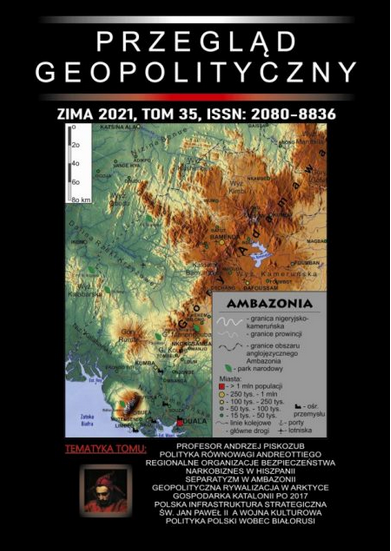REGIONAL SECURITY SYSTEM AFTER THE COLD WAR – A GAME OF POWER AND INTEREST
REGIONAL SECURITY SYSTEM AFTER THE COLD WAR – A GAME OF POWER AND INTEREST
Author(s): Robert BiałoskórskiSubject(s): Government/Political systems, International relations/trade, Security and defense, Military policy, Geopolitics, Peace and Conflict Studies
Published by: Polskie Towarzystwo Geopolityczne
Keywords: NATO; OSCE; CIS; CSTO; SCO; EU; ANZUS; African Union; international security; powermetrics; economic power; military power; geopolitical power;
Summary/Abstract: The paper analyses the regional security system (RSS) concept consisting of regional security organizations (RSOs) related to five regional security blocks (RSBs): Western RSB, CIS/CSTO RSB, CIS-Asia RSB, African RSB, and East-West RSB, after a Cold War. Relying on the empirical data received from powermetric formal model approach, the balance of power, as well as the security interests of the RSBs have been determined. The East-West RSB represented by the OSCE is the leader in all categories of powermetric ranking according to economic power, military power, and geopolitical power, composed by the NATO’s, EU’s, as well as the CIS/CSTO RSB countries. The economic, military, and geopolitical power of the NATO (more broadly the Western RSB) is the strongest pillar of the OSCE power. The non-NATO states, like the Russian Federation only slightly impact the power of the OSCE. The security interests of the Western RSB countries are quite different in comparison to the CIS/CSTO RSB states in OSCE.
Journal: Przegląd Geopolityczny
- Issue Year: 2021
- Issue No: 35
- Page Range: 43-60
- Page Count: 18
- Language: English

